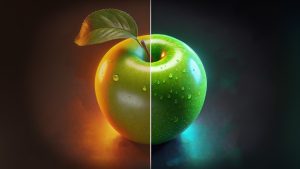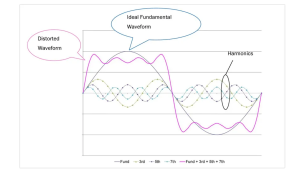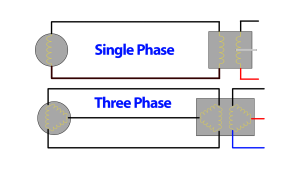Light is an essential element of our everyday lives, profoundly influencing how we perceive the world around us. From the warm glow of a sunset to the bright, artificial illumination of a streetlamp, light plays a crucial role in both natural and human-made environments. But what exactly is light, and how does it work? This article gets into the fascinating science of light, exploring the nature of photons, the mechanics of human vision, the color spectrum, various lighting technologies, and the invisible realms of ultraviolet (UV) light.

The Nature of Light
At its core, light is a form of electromagnetic radiation, which encompasses a broad range of wavelengths and frequencies. The visible light spectrum, which human eyes can detect, ranges from approximately 400 to 700 nanometers (nm) in wavelength. However, light extends beyond this visible spectrum, including ultraviolet (UV) light, infrared radiation, and other types of electromagnetic waves.
Light behaves both as a wave and as a particle, a duality known as wave-particle duality. This dual nature is fundamental to understanding light’s properties and behavior. The particle aspect of light is represented by photons, which are discrete packets of energy that travel at the speed of light. Photons have no mass, yet they carry energy and momentum, enabling them to interact with matter in various ways.

Illumination and Human Vision
When light from a source, such as the sun or a light bulb, illuminates an object, the photons interact with the object’s surface. Depending on the material properties, light may be absorbed, reflected, or transmitted. The reflected light then enters our eyes, enabling us to perceive the object.
The human eye is a remarkable organ designed to detect and process light. Light enters the eye through the cornea, passes through the pupil, and is focused by the lens onto the retina at the back of the eye. The retina contains two types of photoreceptor cells: rods and cones. Rods are highly sensitive to low light levels and are responsible for night vision, but they do not detect color. Cones, on the other hand, function best in bright light and are responsible for color vision. There are three types of cones, each sensitive to different wavelengths of light corresponding to red, green, and blue.

When photons strike the photoreceptor cells, they trigger chemical reactions that convert light energy into electrical signals. These signals are then transmitted to the brain via the optic nerve, where they are processed and interpreted as visual images.
The Color Spectrum
The colors we perceive are determined by the wavelengths of light that reach our eyes. The visible spectrum includes all the colors that the human eye can see, arranged in a continuous sequence: red, orange, yellow, green, blue, indigo, and violet. Each color corresponds to a specific range of wavelengths, with red light having the longest wavelengths (around 700 nm) and violet light having the shortest (around 400 nm).

Color perception is also influenced by the combination of different wavelengths of light. For instance, white light is a mixture of all the colors in the visible spectrum. When white light passes through a prism, it is dispersed into its constituent colors, creating a rainbow effect. Similarly, objects appear colored because they reflect certain wavelengths of light while absorbing others. A red apple appears red because it reflects red wavelengths and absorbs others.
Lighting Technologies
Various technologies produce light through different means. Here, we explore some common types of lighting and how they generate illumination:
Incandescent Bulbs: These traditional light bulbs produce light by heating a filament, typically made of tungsten, to a high temperature. The filament glows and emits light due to thermal radiation. However, incandescent bulbs are inefficient, as most of the energy is lost as heat rather than light.
Fluorescent Lights: Fluorescent lamps operate by passing an electric current through a gas, usually mercury vapor, which emits ultraviolet light. This UV light then excites a phosphor coating inside the tube, causing it to fluoresce and produce visible light. Fluorescent lights are more energy-efficient than incandescent bulbs but contain mercury, which requires careful disposal.
Light Emitting Diodes (LEDs): LEDs produce light through electroluminescence. When an electric current passes through a semiconductor material, it emits light. LEDs are highly efficient, durable, and have a long lifespan, making them a popular choice for various lighting applications.
Halogen Lamps: These are a type of incandescent bulb that uses a halogen gas to increase efficiency and lifespan. The halogen gas helps redeposit evaporated tungsten back onto the filament, reducing wear and extending the bulb’s life.
Ultraviolet (UV) Light
While visible light is only a small part of the electromagnetic spectrum, UV light exists just beyond the violet end of the visible spectrum, with wavelengths ranging from 10 to 400 nm. Although invisible to the human eye, UV light plays a significant role in various natural and artificial processes.
UV light is classified into three types based on wavelength: UVA (long-wave), UVB (medium-wave), and UVC (short-wave). Each type of UV light has different effects and applications:
UVA: With wavelengths between 320 and 400 nm, UVA makes up about 95% of the UV radiation reaching the Earth’s surface. It penetrates the skin more deeply than UVB and is associated with skin aging and some skin cancers.
UVB: Ranging from 280 to 320 nm, UVB is mostly absorbed by the Earth’s atmosphere, with only about 5% reaching the surface. UVB is responsible for sunburn and plays a crucial role in the production of vitamin D in the skin.
UVC: With wavelengths between 100 and 280 nm, UVC is the most dangerous type of UV radiation but is entirely absorbed by the ozone layer and does not reach the Earth’s surface. UVC is used in germicidal lamps for sterilization purposes.

Even though we cannot see UV light, its presence and effects are all around us. For instance, UV light from the sun contributes to the risk of skin cancer and cataracts, highlighting the importance of protective measures such as sunscreen and sunglasses. UV light is also utilized in various technologies, from disinfection and sterilization to forensic science and industrial processes.
Conclusion
In conclusion, light is a multifaceted phenomenon that encompasses a range of wavelengths, from the visible spectrum that illuminates our world to the invisible ultraviolet light with its diverse effects. Understanding light’s properties and how it interacts with matter enriches our appreciation of the natural world and informs the development of advanced technologies. Through the study of photons and human vision, we gain insights into the fundamental processes that shape our perception and experience of light.








